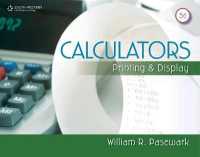- ホーム
- > 洋書
- > 英文書
- > Nature / Ecology
Full Description
Surveying Natural Populations is a user-friendly primer to the essential methodologies of quantitative field ecology or paleoecology. Combining the intuitive methods of the field researcher with the mathematical precision of the statistician, the volume determines, through real biodiversity and ecological examples, the necessary measures for a complete community assessment while clarifying the confusions between biological and statistical terminology. Focusing on underlying mathematical concepts, it describes how to complete incrementally a quantitative sampling of any recent or fossil population. The first half of Surveying Natural Populations explains the fundamentals of ecological assessment. Employing a single data set throughout, initial chapters navigate such topics as estimating densities, relative abundance, occurrences, the determination of adequate sample sizes and field sampling schemes. The second half covers the newest advances in biodiversity measurement. Through the use of information mathematics and decomposition, the authors mathematically examine the relationship among a number of proposed diversity indices and discard inappropriate measures.
What remains is a simple, all-encompassing system called SHE analysis, in which species density, richness, information, and evenness are all shown to be related explicitly. This biodiversity data is then integrated into a simple graphic, a plot called a biodiversitygram, which provides the researcher with a cohesive descriptive and inferential tool to assess any community's biodiversity.
Contents
Preface Acknowledgments 1. Introduction 2. Density: Mean and Variance 3. Normal and Sampling Distributions for Fieldwork 4. Confidence Limits and Intervals for Density 5. How Many Field Samples? 6. Spatial Distribution: The Power Curve 7. Field Sampling Schemes 8. Species Proportions: Relative Abundances 9. Species Distributions 10. Regression: Occurrences and Density 11. Species Occurrences 12. Species Diversity: The Number of Species 13. Biodiversity: Diversity Indices Using N and S 14. Biodiversity: Diversity Measures Using Relative Abundances 15. Biodiversity: Dominance and Evenness 16. Biodiversity: Unifying Diversity and Evenness Measures with Canonical Equations 337 17. Biodiversity: SHE Analysis as the Ultimate Unification Theory of Biodiversity with the Complete Biodiversitygram 18. Biodiversity: SHE Analysis for Community Structure Identification, SHECSI Appendix 1: Number of Individuals per 100 m2 Quadrats of the Beni Biosphere Reserve Plot 01, N = 100 Appendix 2: Number of Individuals per 400 m2 Quadrats of the Beni Biosphere Reserve Plot 01, N = 25 Appendix 3: Table of Random Numbers Appendix 4: Values of the Log Series Parameter a for a Given Number of Individuals (N) and Species (S) Appendix 5: Subset of Bat Counts from Venezuela Appendix 6: Answers to Chapter Problems References Index







